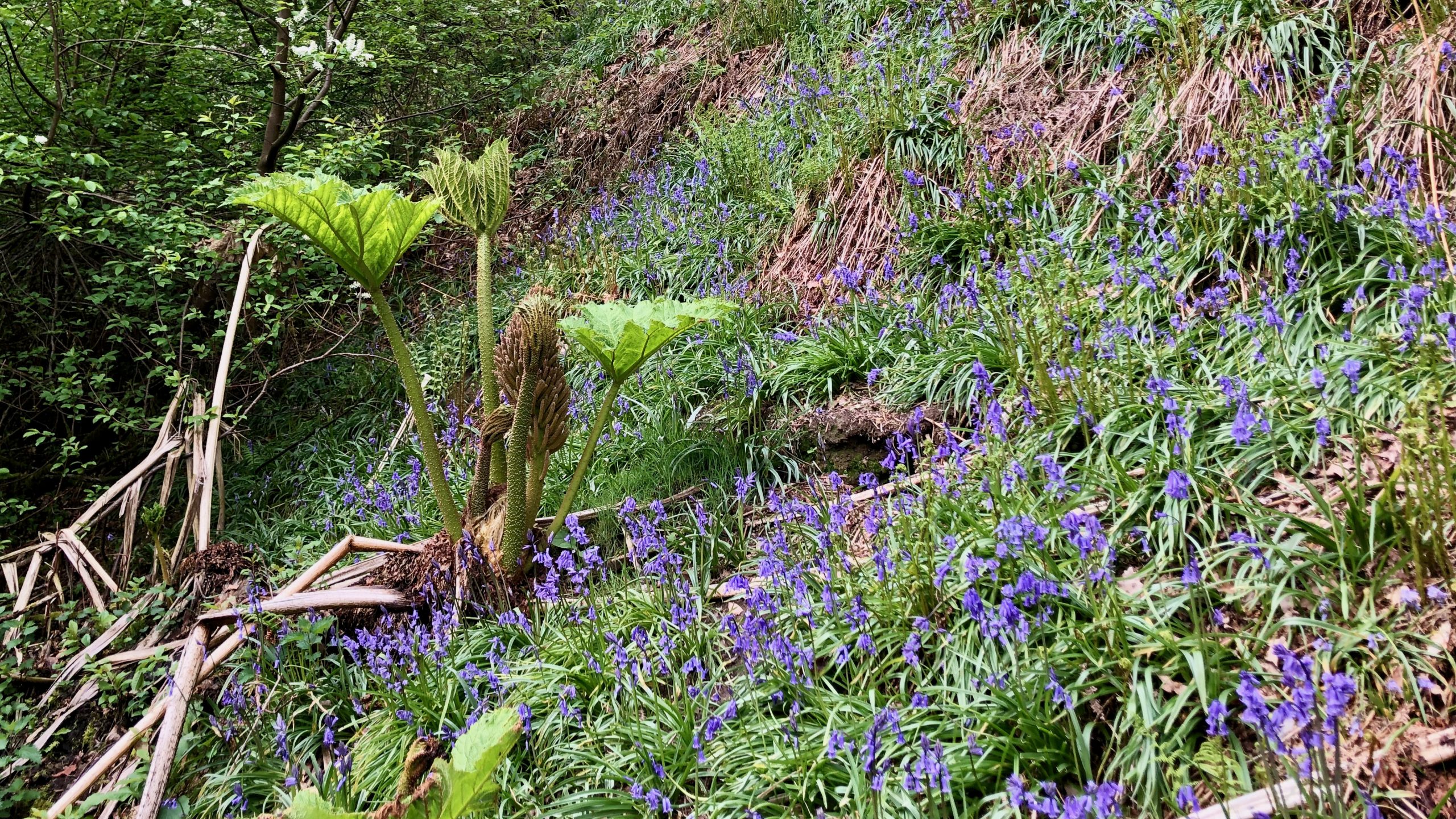An annual task with the National Trust is at the Valley Gardens at Bransdale to tackle the invasive American Skunk Cabbage, which thrives in the damp areas of the valley floor. But this day was interrupted when a sudden hail storm arrived, making the already boggy ground even more challenging.
On arrival is sunshine, we were treated to a stunning sight of vibrant bluebells covering the steep sides of the gill. Another marsh-loving plant, Gunnera, had yet to reach its full height. This specimen had taken hold up the slope amongst the bluebells. I believe it to be the Gunnera tinctoria, commonly known as Chilean rhubarb, which originally hails from Chile and Argentina. Unfortunately, it, too, has become an invasive species. In just a couple of months, its leaves will reach an impressive size of up to 9 feet in diameter, with the leaf stalks towering to 8 feet in height. Surprisingly, this plant is actually edible, and in its native lands, its stalks are used in salads, liquors, or even made into marmalade1Wikipedia Contributors. 2023. ‘Gunnera’, Wikipedia (Wikimedia Foundation) <https://en.wikipedia.org/wiki/Gunnera#Uses> [accessed 11 May 2023].
Interestingly, the roots of the American Skunk Cabbage are also edible, although they require roasting to reduce the high levels of oxalic acid they contain2‘Skunk Cabbage’. 2020. Oregonencyclopedia.org <https://www.oregonencyclopedia.org/articles/skunk-cabbage/#.ZF1U9OzMLUI> [accessed 11 May 2023].
- 1Wikipedia Contributors. 2023. ‘Gunnera’, Wikipedia (Wikimedia Foundation) <https://en.wikipedia.org/wiki/Gunnera#Uses> [accessed 11 May 2023]
- 2‘Skunk Cabbage’. 2020. Oregonencyclopedia.org <https://www.oregonencyclopedia.org/articles/skunk-cabbage/#.ZF1U9OzMLUI> [accessed 11 May 2023]

Leave a Reply